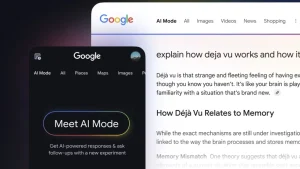Awful pop-ups and nasty adware in Chrome are quite common on Chrome for Desktop. Strangely enough, it seems that the problem appears on Android, as well. Namely, some users report that Chrome keeps opening on its own on Android and this is, to be perfectly honest with you, one of the weirdest issues we run into considering Google’s browser.
If this happened to you or keeps happening, make sure to check the solutions we listed below. Hopefully, you won’t be troubled by this nuisance by the end of the article.
In this article:
ToggleHow do I stop Chrome from opening automatically on Android?
Let’s get one little thing out of the way. If you don’t want Chrome to open links automatically and take the role of the default browser, you can change that setting. Just change the default app and reset the default link settings for Chrome.
On the other hand, if you are getting Chrome opening on its own on Android and taking you to some suspicious (spam or phishing) sites, check the instructions we provided.
1. Restart your device
Let’s start with a simple restart. This might be a temporary bug at work causing the app to keep reopening. Some users suspect a virus but we are not familiar with any kind of Android-based malware that does this. More times than not, it’s just a pop-up with notification permission. So, technically, it is malware but the less dangerous kind, the adware.
Now, if the problem persists, follow these steps to disable specific website settings in Chrome:
- Open Chrome.
- Tap on the 3-dot menu and open Settings.
- Open Site settings.
- Firstly, select Pop-ups and redirects and make sure that this option is disabled for Chrome to block pop-ups.
- Secondly, open Notifications and disable that option, too.

- Finally, open Ads and disable this option, as well.
- Now, close Chrome from the Recents menu and check if it opens on its own again.
2. Clear local data from Chrome
If the previous solution failed to fix the problem, you can reset Chrome by clearing all local data. This is always a good way to fix some app issues, especially in this case. Clearing data from Google Chrome differs from other apps, considering that the app stores bookmarks, search history, and cookies locally.
Here’s how to clear local data from Google Chrome on Android:
- Open Settings.
- Select Apps.
- Expand All apps (App Manager or Manage apps on some Android skins).
- Open Chrome from the list of available apps.
- Tap Storage.
- Tap Manage storage.
- Clear all data from Chrome and restart your device.

If that doesn’t help and Chrome keeps opening on its own on your Android, make sure to try the next solution.
3. Reset App Preferences
Another viable troubleshooting step is App Preferences reset. This procedure will reset all permissions for all apps and restore default apps. Once you’ve done that, the problem should be gone.
Here’s how to reset App Preferences on Android:
- Open Settings.
- Tap Apps & notifications (Apps).
- Tap All apps (App manager or Manage apps).
- Now, tap on the 3-dot menu and select Reset app preferences.
- Confirm the selection.
4. Uninstall Chrome updates if Chrome keeps opening on its own on Android
The problem should be solved long before this step but if you are still unable to fix it, consider uninstalling updates from Google Chrome. Of course, if your Android skin allows it, you can completely remove Chrome and reinstall it from Play Store. However, this is rarely possible since Chrome often comes as a pre-installed app. Even when there’s another default browser like Samsung Internet or MI Browser, Chrome is a mandatory app on Android.
Nonetheless, uninstalling updates is similar to reinstalling an app completely and a viable troubleshooting step. Therefore, make sure to follow these steps to uninstall updates from Chrome:
- Again, navigate to Settings > Apps > All apps > Chrome.
- Tap on the 3-dot menu and tap Uninstall updates.

- Restart your device and open the Play Store.
- Search for Chrome and update the app.
5. Sign out of Chrome and sign in again
Finally, the only remaining step we can recommend (bar to factory reset) is to sign out of your Google Account on Google Chrome and sign in again. This is a long stretch but there’s only so much you can do to troubleshoot this kind of issue. Give it a try and see if the problem occurs again.
To sign out of Chrome on Android, open Chrome > 3-dot menu > Settings > your Google Account. Once there, tap Sign out and turn off sync. Also, don’t forget to report the problem to Chrome support.
We can call it a wrap and thank you for reading. Have the solutions provided here helped you fix the problem? Tell us in the comments section below.
Editor’s note: This article was initially published in November 2021. We made sure to revamp it for freshness and accuracy.




